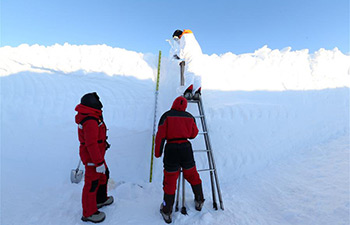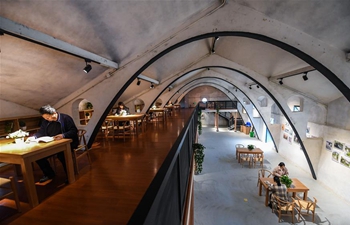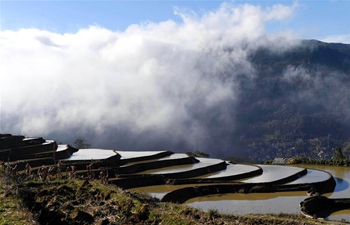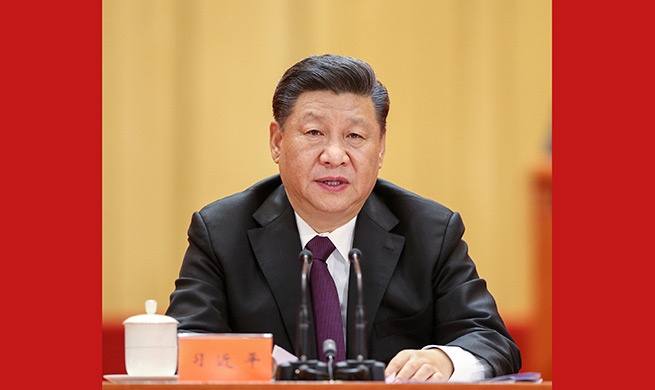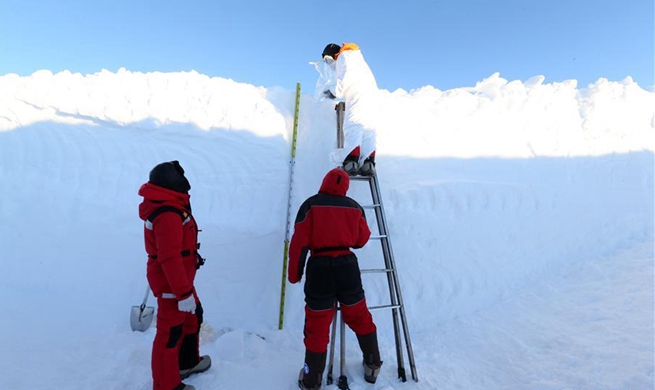HELSINKI, Dec. 20 (Xinhua) -- While Finland takes pride in its ice breaking services in domestic waters, the commercial future of the country's Arctic high seas offshore capabilities looks uncertain.
In the 1990s Finland built two combo-icebreakers that could, besides breaking ice, plough the ocean floor and tow away floating ice. They were supposed to make money elsewhere, mainly in the Arctic areas, during the Finnish summer.
Since then, the ships' business has been hit with adverse market conditions and high Finnish labor costs, except a few years of good results.
The balance sheets of the international offshore operations of Arctia, a state-owned company that owns the combo-icebreakers, show deficits of 7.8 million euros in 2010 and 7.1 million in 2011, but went into solid profit for several years starting from 2012, when Arctia won a lucrative three-year contract with Shell International. Two ships sailed to the Arctic sea north of Alaska.
In late 2016, one ship was commissioned by Sovcomflot and sailed to the Northern Pacific Ohota sea to assist in gas production, near Sakhalin. But in 2017 the operations were again in the red figures, with a 7-million deficit.
In November 2018, the company announced that it would start talks with its staff about efficiency improvement, as prescribed in Finnish legislation. Possible layoffs would begin next spring, local media suspected.
Media reports quoted company sources saying the ships could find use in assisting in tourism and scientific operations in Arctic waters during the Finnish summer.
Before the good years with Shell, the combo-icebreakers were a controversial theme in Finland. Critics said their price tag was 150 million euros per ship, while an ordinary icebreaker was available at 100 million.
Member of Parliament Osmo Soininvaara said in 2013 that "Arctia is gambling with public money." He claimed Arctia had covered the losses of the offshore operations through charging overprice in the winter icebreaking domestically.
Tero Vauraste, dismissed as Arctia's CEO this week, on Wednesday strongly defended the decision in the 1990s to build combo ships. He told national broadcaster Yle that the ships had "paid themselves back". He said that when the whole life cycle of the ships is viewed, their business has been "very profitable".
Mika Lintila, minister for economic affairs, said on Wednesday the exit of Vauraste is an internal matter of the company and was decided by the board. In November Lintila had commented on the financial situation of the company and told Yle that "the state was not willing to pump money into Arctia".
In Finnish debate the high operational costs of the ships have been seen as a key reason for the weak success of the Finnish Arctic offshore businesses. Vauraste said salaries should be the same as that of sailors on ordinary Finnish ships.
Simo Zitting, chairman of the Finnish seafarers union, said the work on an icebreaker is very demanding, particularly in these ships. That is reflected in the pay.
Zitting noted last month that within the EU there are support systems for international shipping, but not available for ships operating mainly domestically. "If the Finnish offshore special ships would mainly sail in high seas, they could possibly get assistance," he said.
Zitting believed that foreign companies that focus on offshore operations are simply better in marketing, and many of their ships are younger than the Finnish vessels built in the 1990s. (1 euro = 1.15 U.S. dollars)
